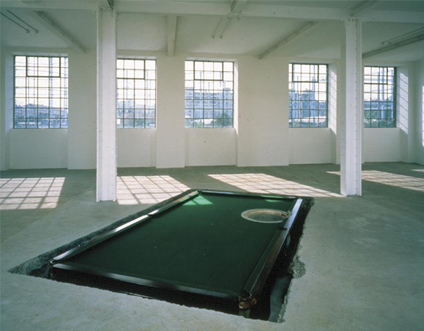Water Table is one of the simplest and oddest of all the creations from the installation artist Richard Wilson. By Andrew Graham-Dixon
I was in a large room waist-high in dark, viscous oil, moving through it untouched like Moses parting the Red Sea. But I couldn't get all the way across and I was marooned in the middle of a still, black lake that was also a liquid mirror: it was raining outside, I saw through a window, and I remember looking at the rain's dark reflection in the oily pool around me and noticing that, there, it was falling not down but up.
I was in the same room, on one of the upper floors of a warehouse in a run- down part of town, and there was no oil this time but there was still something peculiar about it. A long steel-framed industrial window running the length of one wall had been cantilevered into the middle of the room and suspended there. Gazing through the displaced window at the buildings and parkland which it still framed, I found myself wondering, curiously, where the inside of the room ended and where the outside began.
I was standing in a cage at the bottom of a tall and dark tower. It started to hail metal, great chunks of steel crashing to the ground a few feet away. Looking up, I saw hundreds of used car parts dangling from wires like huge silver bats in a belfry. Slowly, rhythmically, they fell, twisting and glittering.
THE WORKS OF Richard Wilson are as peculiar and inevitable as the things seen and heard and felt in dreams, and that is how they survive in the memory: vivid, enigmatically portentous, illogically logical, more like sleeping than waking experiences. The memory, in fact,...


